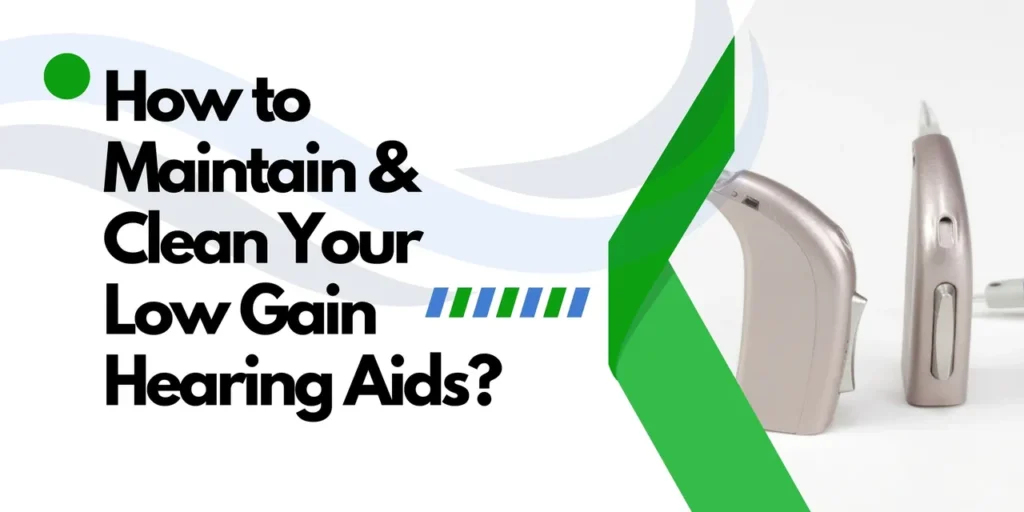How to Maintain & Clean Your Low Gain Hearing Aids?

Hearing aids are like an extra body part that requires regular cleaning to function properly. Cleaning your low gain hearing aids should be as regular as brushing your teeth.
Hearing aids are constantly exposed to earwax, dirt, and moisture. That’s why cleaning them regularly is important, ensuring they produce the clearest sound possible without causing ear infections.
Welcome to Clearly Hearing. Today, let’s discuss everything about cleaning your hearing aids.
Low Gain Hearing Aids Cleaning Tool Kit
Cleaning kits for hearing aids, which include all the tools mentioned earlier, can be acquired from your hearing aid provider, online platforms, or physical stores.
Here are some additional items that can assist in cleaning your hearing aids:
● A child’s toothbrush with soft bristles can double as a brush for wax removal
● Instead of a cloth, you can use disinfectant wipes, provided they are designed for use with hearing aids
● An alcohol-free cleaner, specifically formulated for hearing aids, can be employed to clean the earmoulds of in-the-ear models
Tips To Clean Low Gain Hearing Aids Effectively
Here are some tips for cleaning low gain hearing aids:
Banish the Wax
Removing wax is very important as, just like your own ear, the build-up of earwax can jam the entire sound mechanism of your hearing aids. Use a gentle brush and a dry cloth to remove wax from the mould, filters, and domes. A wax pick or wire loop can help you remove wax and debris from the vents and crevices.
Surface Cleanse
A soft, dry cloth is perfect for cleaning the hearing aid’s surfaces. The special brush and tool accompanying the hearing aid can be used to clean the sound outlet, microphone opening, and vent. Ensure you don’t use sharp objects near the microphone or receiver ports. Instead, use your wax pick.
Disinfectants To the Rescue
If you use disinfectant wipes, ensure they’re compatible with hearing aids. An alcohol-free cleaner designed for hearing aids should be used to clean the earmolds of in-ear models.
Water Is a No-No
Avoid direct contact between your hearing aid and water. A sterilisation solution can disinfect your ear mould in case of an ear infection.
Remove Batteries During Cleaning
Keeping the batteries attached to your low-gain hearing aids will deplete the battery capacity. It is recommended that you remove the batteries overnight and keep them aside when cleaning up your hearing aids. This will save you some battery energy.
Get Your Ears & Hearing Aids Checked in Clearly Hearing!
At Clearly Hearing, we know that an auditory processing disorder can significantly affect an adult’s ability to communicate, learn, and overall quality of life. So, we utilise various software tools to assess your auditory skills in a fun and motivating way. Think of it as your personalised brain gym, where you can improve your sound-processing abilities through engaging challenges and rewarding progress.
Sometimes, you need to replace parts of your hearing aid, either due to wear and tear or because you’ve misplaced a piece while disassembling it. Some hearing aids have device-specific parts, so we can provide a list of different accessories and the devices they’re best suited for, along with maintenance tips to help prolong their lifespan.
Our adult auditory processing disorder test aims to provide accurate and consistent results, forming the basis for personalised treatment plans. So, contact us today, and let’s discuss your hearing aid requirements!
